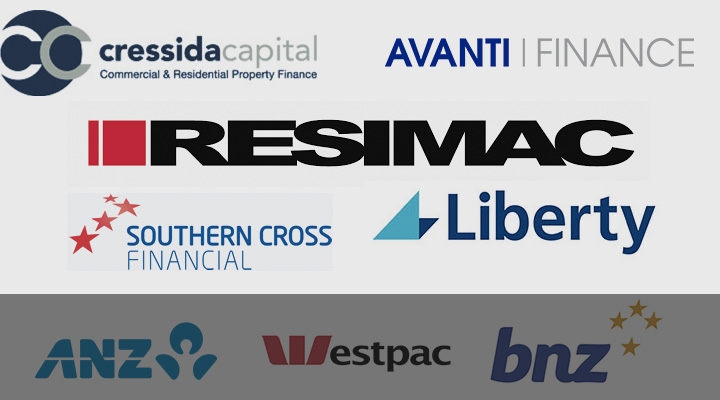Maintenance budgets for Landlords
Find out why a Landlord maintenance budget is essential for all Landlords. Read More…
by Nick Gentle on
Article appears under:
Mortgages,
Today’s article is Part 2 of our mortgage series, specifically focusing on non-bank lenders. This is aimed at investors who want to take advantage of low-interest rates and strong population growth yet feel cut out of the market by LVR restrictions recently put in place by the Reserve Bank.
If you haven't read Part 1 yet, you can access it here.
In Part 1, we looked at the different types of lenders in the market and what they can offer. Today I am sharing some examples of what this looks like “in the wild”.
I checked in with Peter Norris at Squirrel for his take on alternative lenders.
"The biggest reason for using the non-bank has been deposit size. These companies are not subject to the rules and therefore are able to lend at up to 80% for rental properties, which means clients are able to get 1-2 more for their portfolio or even just get one when they thought they couldn’t. Interest rates for these aren’t too bad at all with most sitting around 5.5%. Even if this was to be long term, it's not a bad rate and is certainly manageable. The exit strategy is the client getting to 60% LVR and moving it to a main bank. This would be through renovations or through general capital gains."
Peter's comment about the rate is bang on, it is easy to look at alternative lenders and declare them “expensive” because their interest rates are a shade higher than banks and forget that the current carded rates for Resimac are cheaper than just about any lending rates in New Zealand’s modern history.
Let’s dig into some actual case studies to see just how people are leveraging non-bank lenders.

Resimac’s carded rate for 5 years is about 5.5%. ASB’s special rate at the moment is 4.7%. There are two very important things to realise before wringing your hands over not getting the lowest possible rate…
A difference of 0.075% amounts to $3,750 extra per year for a $500,000 loan. Interest is tax deductible so at a 30% tax rate the actual difference is closer to $2,500. If the property goes up in value MORE than $2,500 or half of a percent in that YEAR, you are ahead and that capital gain becomes equity which means you can eventually refinance back to a main bank.
We are not saying “blindly trust capital gain”, you still should ensure you can cover the holding costs on that property from rental income received, yet historically property prices have risen on average in New Zealand by around 5 - 7% each year.
This is a true story from David Hart at Mortgage Supply; a couple wanted to buy their first home in Tauranga and the market was rising rapidly. They found a leaky home that was available at a significant discount, $450K vs $650K for surrounding homes. At a repair cost of $100K, this looked like an opportunity. The problem was none of the main banks would lend on a leaky building.
In this case, even Resimac turned their nose up at the property, so David arranged a third tier lender to fund them for the property through the reno. You'll recall from Part 1 that most 3rd tier "Asset Lenders" are looking for short-term projects. The buyer went through with the renovations, the house was passed by council and was able to get mainstream lending to take over the loan.
The numbers:
Because the property was now worth $650K and was their own home, the bank offered up to 80% LVR ($520K) on the finished house, so with a total spend of $550K to date (plus interest, but they lived in the property so saved on rent), they effectively secured a home with only $30K of their own cash.
Great result.
Peter Norris from Squirrel sent through this example; at Christmas last year a client of his purchased a house in Forrest hill, North Shore for $630,000 (CV $570,000). The property was in a run down condition ready for a full renovation.
After an "extreme makeover" renovation which cost $63,000 and included adding a third room, the property was revalued at $860,000 in February 2016, which translates into a net equity increase of $167,000 for two months’ work.
The client borrowed 80% of the purchase price and funded the renovation himself. At the end, the LVR was 58% which allowed him to get it back to a main bank (at the time Auckland was 70% LVR) and pull back some of the cash they put in.
The actual “pain” of having to pay a slightly higher rate for a short while to secure a good investment is negligible over the life of owning the asset. Investors should have a plan to move to a main bank and a timeline in mind before they purchase and discussing that with a mortgage broker is a sure way to go.
What’s more, it is a painless opportunity to explore! Simply contact a mortgage broker and fill in an application form, it is no more complicated than it would be going directly to a bank, Easy.
Peter Norris from Squirrel and David Hart from Mortgage Supply contributed to this article.

Nick Gentle
Business Owner & Operations Manager
nick@ifindproperty.co.nz
027 358 3855
Maintenance budgets for Landlords
Find out why a Landlord maintenance budget is essential for all Landlords. Read More…
Invercargill Property Update March 2025
Discover expert insights into Invercargill's property market, recent deals, and investment strategies tailored for savvy investors. Read More…
Dunedin Property Market Update March 2025: Insights, Investment Opportunities, and Success Stories. Read More…